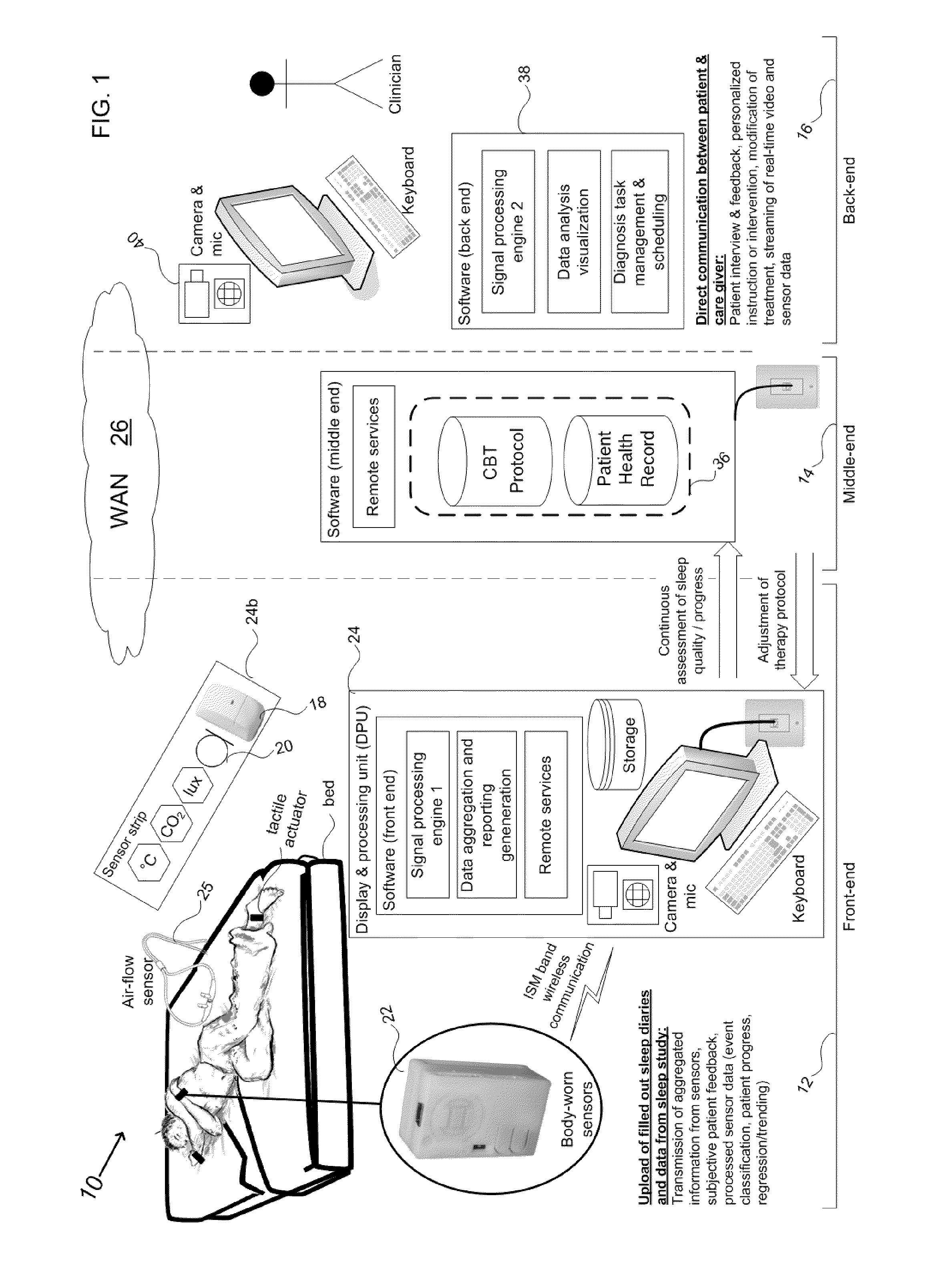Device and method to monitor, assess and improve quality of sleep
a technology of quality of sleep and sleep assessment, applied in the field of systems and methods for improving sleep quality, can solve the problems of chronic insomnia imposing a high burden on the health care system, significant negative effect on the quality of life of individuals, and sleep disorders that burden the u.s. health care system with approximately sixteen billion dollars in direct annual medical costs. achieve accurate and objective effect of maximizing individual convalescen
- Summary
- Abstract
- Description
- Claims
- Application Information
AI Technical Summary
Benefits of technology
Problems solved by technology
Method used
Image
Examples
Embodiment Construction
[0037]In the following detailed description, reference is made to the accompanying drawings, which form a part hereof. In the drawings, similar symbols typically identify similar components, unless context dictates otherwise. The illustrative embodiments described in the detailed description, drawings, and claims are not meant to be limiting. Other embodiments may be utilized, and other changes may be made, without departing from the spirit or scope of the subject matter presented here. It will be readily understood that the aspects of the present disclosure, as generally described herein, and illustrated in the figures, may be arranged, substituted, combined, and designed in a wide variety of different configurations, all of which are explicitly contemplated and made part of this disclosure.
A. Procedure to Assess and Improve Quality of Sleep
[0038]Referring now to the drawings, and particularly to FIG. 1, there is shown one embodiment of a sleep disorder monitoring, assessment, and ...
PUM
 Login to View More
Login to View More Abstract
Description
Claims
Application Information
 Login to View More
Login to View More - R&D
- Intellectual Property
- Life Sciences
- Materials
- Tech Scout
- Unparalleled Data Quality
- Higher Quality Content
- 60% Fewer Hallucinations
Browse by: Latest US Patents, China's latest patents, Technical Efficacy Thesaurus, Application Domain, Technology Topic, Popular Technical Reports.
© 2025 PatSnap. All rights reserved.Legal|Privacy policy|Modern Slavery Act Transparency Statement|Sitemap|About US| Contact US: help@patsnap.com



